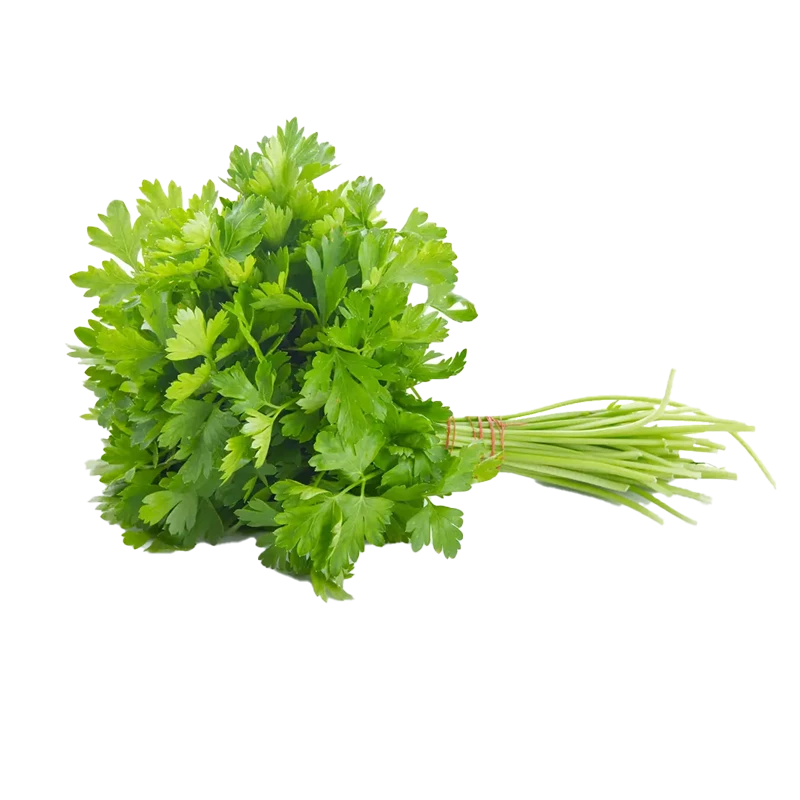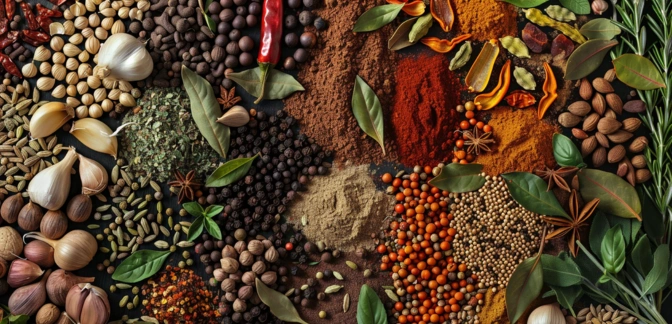Parsley — Nutrients, Health Benefits, and Shopping Tips

Written by Listonic Team
Last update on September 5, 2024
Parsley nutrients
Nutrition facts
Amount per 100 g
Calories
🔥 36 kcal
| Nutrition per: 100 g | Value | % Daily Value* |
|---|---|---|
| Carbs | 6 g | 2.18% |
| Fiber | 3 g | 10.71% |
| Sugars | 1 g | 2% |
| Glycemic Index | 5 | - |
| Protein | 3 g | 6% |
| Sodium | 56 mg | 2.43% |
| Total Fat | 1 g | 1.28% |
*The % of Daily Value (DV) tells you how much a nutrient in a serving of food contributes to a daily diet. 2,000 calories a day is used for general nutrition advice.
36
🍏 Low-Calorie Foods
5
🟢 Low Glycemic Index
Parsley facts & tips
Health benefits
- Rich in antioxidants such as flavonoids and Vitamin C, which help protect the body from free radicals.
- High in vitamins and minerals such as Vitamin K, Vitamin A, and folate, supporting overall health and well-being.
- Supports digestive health with its fiber content.
- Anti-inflammatory properties that may help reduce inflammation.
Health risks
- Potential for allergic reactions in some individuals, particularly those allergic to plants in the Apiaceae family, causing symptoms like itching, swelling, or difficulty breathing.
- Risk of digestive discomfort such as bloating or gas when consumed in large quantities, especially for those sensitive to high-fiber foods.
- Potential for interactions with medications particularly blood thinners, as parsley contains vitamin K, which can affect blood clotting.
- Potential for pesticide residue on conventionally grown parsley, which can pose health risks if not properly washed or sourced from organic suppliers.
How to choose parsley
Fresh parsley should boast vibrant green leaves that are crisp and aromatic. The stems should be sturdy, supporting the leaves well without any drooping.
Wilted parsley or bunches with yellowing leaves should be avoided, as they are likely past their best. Parsley with a mildew smell or dark spots on the leaves should also be avoided, as it is not fresh.

How to store parsley
Fresh parsley should be stored in the refrigerator, wrapped in a damp paper towel, and placed in a plastic bag. This method keeps it hydrated and fresh for up to a week. Alternatively, parsley can be stored in a jar of water like cut flowers.
Leaving parsley at room temperature can cause it to wilt quickly. Avoid washing parsley before storing, as excess moisture can lead to mold. Always trim the stems and remove any damaged leaves before storage. Use a clean, dry cloth to gently pat dry if washing is necessary.
✅ Extra Tip
How long does it last?
Parsley can last for 1-2 weeks in the refrigerator when stored in a plastic bag with a paper towel to absorb excess moisture. For longer storage, parsley can be dried and kept for up to 6 months in an airtight container.
What to do with leftovers?
Leftover parsley can be used in a variety of culinary and non-culinary ways. In the kitchen, parsley adds a fresh, herbal flavor to dishes like salads, soups, sauces, and grilled meats. It’s often used as a garnish to brighten up dishes, and can also be blended into pesto or mixed into dressings.
Beyond cooking, parsley has several other uses. It can be brewed into a tea, traditionally used to help aid digestion and reduce bloating. Parsley is also known for its ability to freshen breath, and chewing on a sprig of parsley can help neutralize odors. Additionally, parsley can be used in homemade beauty treatments, such as mixing it into a face mask to help brighten the complexion. In the garden, parsley can be planted as a companion herb to help repel pests and attract beneficial insects.
👨⚕️️ Medical disclaimer
How parsley supports specific health conditions
Parsley is a nutrient-dense herb rich in antioxidants, supporting immune health by protecting cells from oxidative stress. It is also high in vitamins A, C, and K, promoting skin health, eye health, and bone health. Parsley’s anti-inflammatory properties help support heart health by reducing inflammation. Its versatility makes it a popular garnish and ingredient in a wide range of dishes, adding both flavor and nutrition.
Discover products from other categories
Listonic Team
Fact-checked
Our editorial team checked this article to make sure it was accurate at the time of publishing it.
Get the top-rated shopping list app on your phone!







